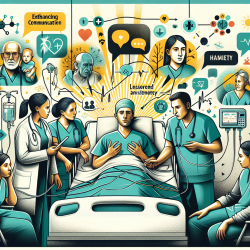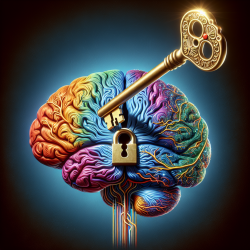Introduction
Amyotrophic Lateral Sclerosis (ALS) is a neurodegenerative disease characterized by progressive motor function loss, including bulbar motor impairment affecting speech and swallowing. Recent research, as outlined in the study "Two Distinct Clinical Phenotypes of Bulbar Motor Impairment in Amyotrophic Lateral Sclerosis," provides insights into the heterogeneity of bulbar symptoms in ALS, presenting two distinct clinical phenotypes. This blog explores how these findings can enhance clinical practice and improve patient outcomes.
Understanding Bulbar Motor Impairment in ALS
The study identifies two subgroups among ALS patients with bulbar motor impairment: those with high speech function and those with low speech function. Despite similar levels of bulbar motor involvement, these groups exhibit different clinical and functional speech presentations. This distinction is crucial for practitioners, as it suggests that a single measure of bulbar impairment may not adequately capture the complexity of the condition.
Clinical Implications
The findings emphasize the importance of using multiple clinical measures to assess bulbar motor involvement in ALS. Practitioners should consider incorporating the following approaches:
- Acoustic Analysis: Utilize acoustic measures, such as the range of the second formant (F2), to assess tongue movement and distinguish between high and low speech-function groups.
- Speech Intelligibility Tests: Regularly conduct speech intelligibility tests to monitor changes in speech function over time.
- Comprehensive Assessments: Implement comprehensive assessments that include both clinical and instrumental measures to capture the full scope of bulbar motor impairment.
Encouraging Further Research
While this study provides valuable insights, further research is necessary to explore the underlying mechanisms driving the phenotypic differences in bulbar motor impairment. Practitioners are encouraged to engage in collaborative research efforts to deepen our understanding of ALS and improve therapeutic interventions.
Conclusion
The identification of distinct clinical phenotypes in bulbar motor impairment among ALS patients underscores the need for nuanced assessment and treatment strategies. By integrating these findings into clinical practice, speech-language pathologists can enhance their ability to tailor interventions, ultimately improving outcomes for individuals with ALS.
To read the original research paper, please follow this link: Two Distinct Clinical Phenotypes of Bulbar Motor Impairment in Amyotrophic Lateral Sclerosis.










